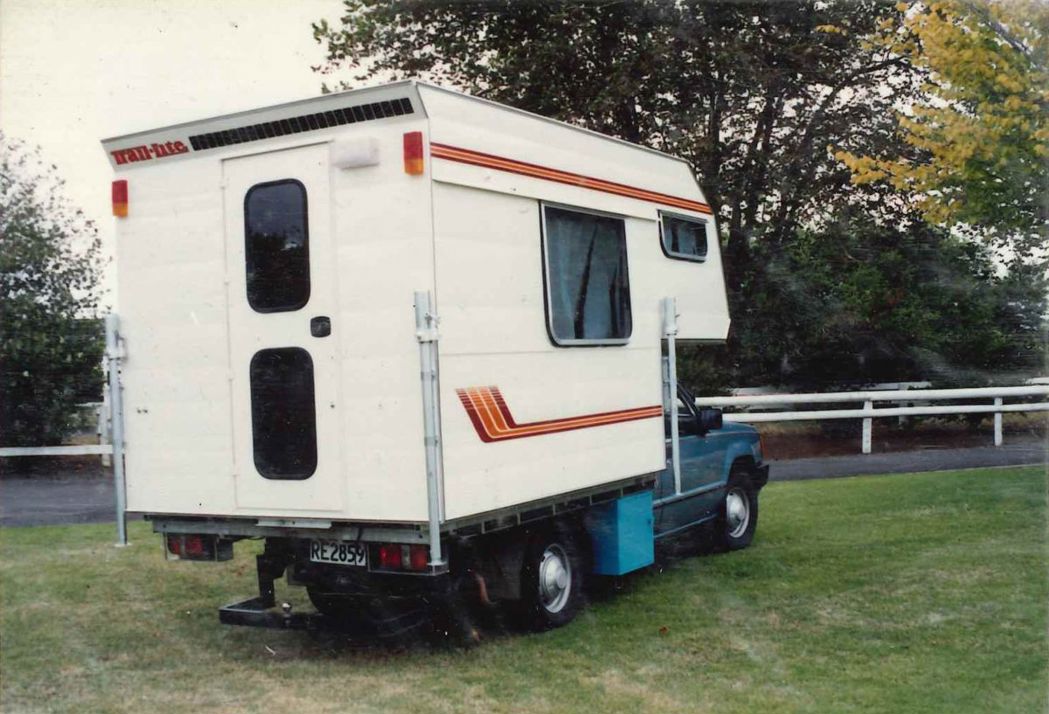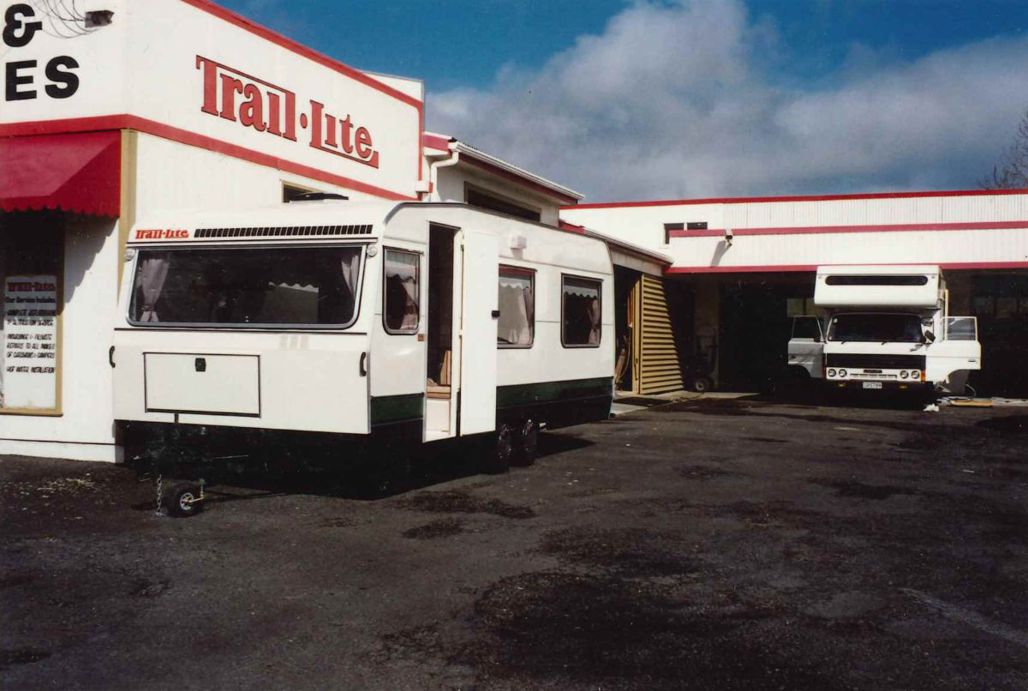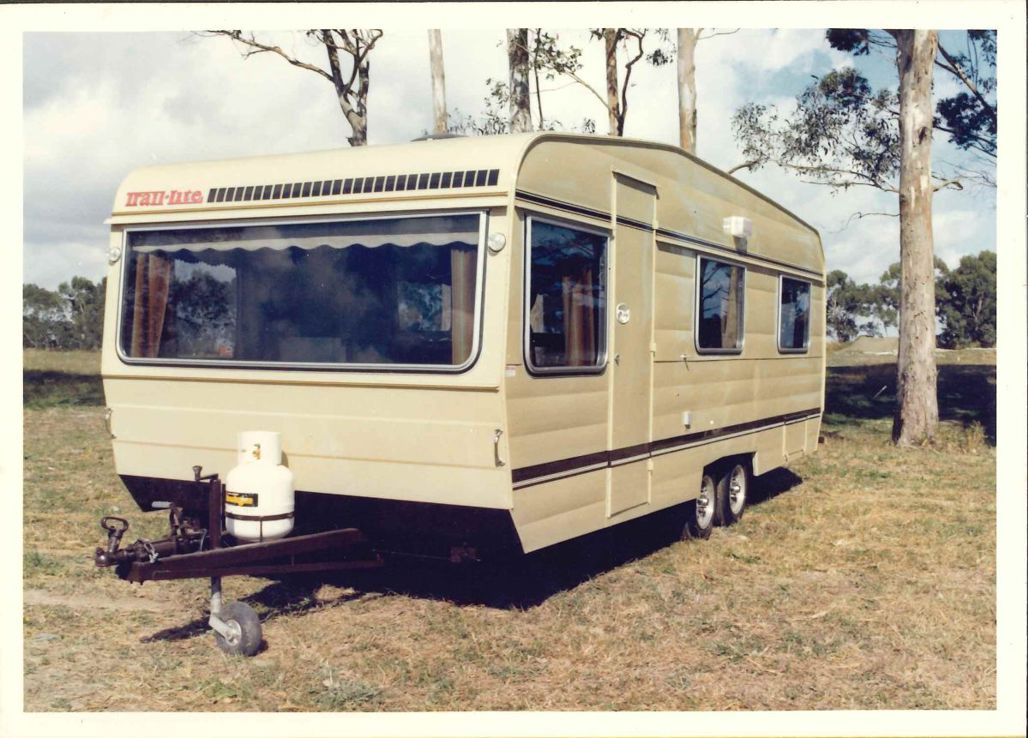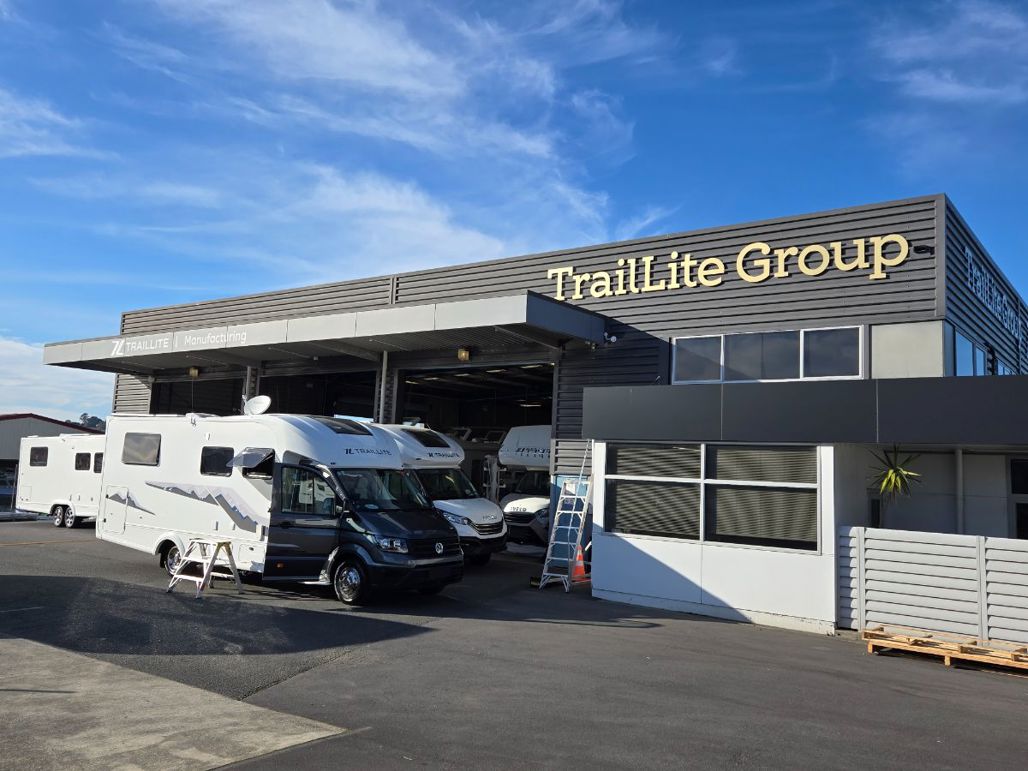When this year’s New Zealand Motorhome, Caravan and Leisure Show kicks off in Hamilton next week (27-29 September), amid some techy and truly sizeable vehicles on the TrailLite stand there will be a small-but-perfectly-restored 1956 caravan.

A modest item by show standards, but also a monument to a Kiwi luxury vehicle company that celebrates its 70th anniversary this year.
TrailLite’s origins are in furniture and coffin manufacture (true story), but the company pivoted to caravans in 1954; so the ’56 on display dates back to the earliest days of the business we know TrailLite as today.
The caravan was in pieces, but taking pride of place in TrailLite’s Pukekohe factory when we visited back in August to collect a Crafter-based 300 motorhome for review.

TrailLite has always been a family business, but it’s been a Newman family business since 1980, when Peter (who started there as a 20-year-old apprentice in 1970) bought out the retiring owners. Peter himself has now retired, but his sons are joint managing directors… which brings us back to the ’56 caravan. “The cool thing about this is that my father is restoring it, and he’s doing it with our apprentices,” says Shaun.
TrailLite motorhomes are produced at the rate of around two per week. They're based on cab-chassis vehicles (Volkswagen Crafter and Iveco Daily are two current favourites), but the design and assembly of the rest is all handled locally.

The factory is not massive at 2779 square metres (part of a larger facility that totals 15,000sqm), so there’s a lot happening even when tiny historic caravans aren’t parked in the middle. Vehicles move down the production line back-to-front, starting with the underfloor engineering, then flooring and cabinetry, then the panels - before the roof is fitted (by a “sky crew” on a platform) and the interior assembly is completed.
Even the core motorhomes are at the premium end of the market, starting at close to $300k. The company developed a formula for local design and layout in the 1980s, including a lounge area at the back, modular fittings and a focus on fundamentals like generous water storage.

TrailLite decided to step up significantly in design and quality a decade ago, to better compete with European brands. It started using sandwich foam and fibreglass cladding, changing interiors from wood to lacquer in neutral colours and offering new layout options.
“The Europeans were doing a lot of shiny surfaces, gold and plastic fittings. We decided to go towards a modern apartment feel without the pomp and ceremony us Kiwis don’t really like,” says Shaun.

“Freedom camping is protected by law here in NZ, and despite it getting a bad rap, we offer a contained way to do it with class.”
Shaun says some of the biggest changes in motorhome design and engineering in the modern era are around electrical systems: “When I started they were pretty simple, but these days customers want to go away and have their vehicle work the same as things do at home.

“They want to use the coffee machine, the hair straightener… they want to charge their e-bikes while they're away, so the electrical systems have had to keep up.
“As a percentage of what goes into the motorhomes, the electrical systems are much greater now. We’re aiming for people to be self-sustained when they go away.”

TrailLite’s longevity means it has lived through several national crises.
The early 1980s were challenging and the Muldoon government’s luxury items tax of 20% virtually halted the caravan industry; so the company pivoted to offer garage builds and renovations. It was only after the 1984 snap election, which saw the tax repealed, that TrailLite could get back to core business, which expanded from caravans to motorhomes.

The company describes the 2007 global financial crisis (GFC) as its toughest years, requiring serious cost-cutting.
The 2020 Covid outbreak was quite the opposite: a surprise boom for the business.
“In lockdown, we thought: this is a disaster,” says Shaun. “How would we get through? We came back to work and the first week we were busy, and the second, and third… and it just didn’t stop.

“Suddenly, everyone wanted a motorhome. In retrospect it makes sense, and our options were different because the business is built on local know-how, premium builds, and on-site support.
“Our customers were cashed-up and feeling frustrated with their isolation and inability to travel. With a motorhome, they could suddenly open up a whole new frontier of travel that was custom spec with every whistle and pop they enjoyed in their usual 5-star stay.”

At its peak during Covid, TrailLite was building up to three motorhomes per week, a 30% increase in production. While production is been rolled back to pre-Covid levels, the company has continued to expand with a new 4500sqm showroom and service centre in Christchurch, which opened last year.
But that ’56 caravan is also a signal that in some respects, things are also coming full circle: “We’re getting back into doing caravans now, which we haven’t really done seriously for about 30 years. But we’re chasing that market fairly seriously.”



























